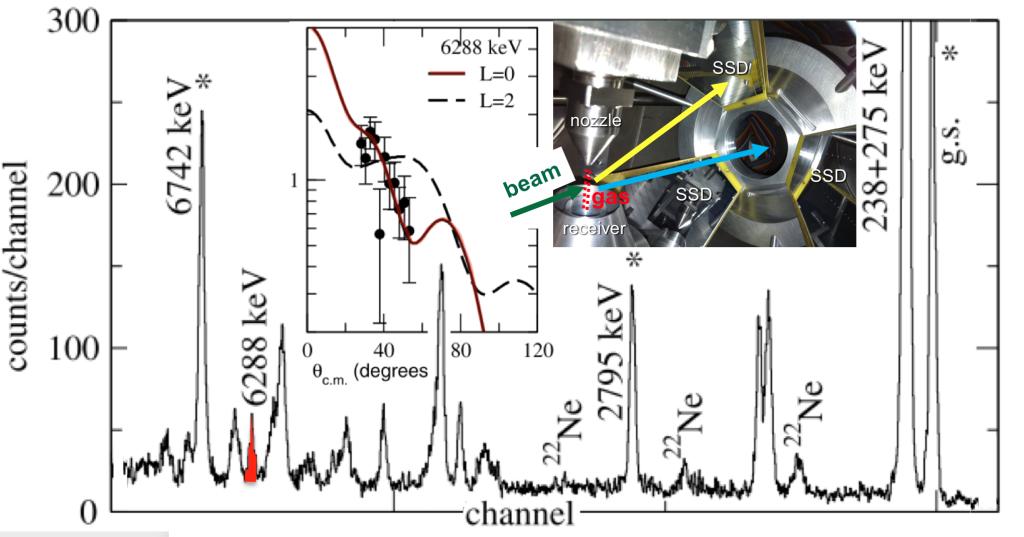
Measuring the yield of radioactive decays of 18F nuclei that are produced in nova explosions and ejected into space can help diagnose the mechanism of these violent outbursts, making this a priority of billion-dollar gamma-ray astronomy observatories. A possible excited quantum mechanical level in the nucleus 19Ne below the threshold of the 18F + p --> 15O + alpha reaction has contributed a large uncertainty in the total amount of 18F synthesized in a nova. The new Jet Experiments in Nuclear Structure and Astrophysics (JENSA) gas jet target system enabled an unambiguous confirmation of this subthreshold resonance and determined its properties via a measurement of the 20Ne + p --> 19Ne + d reaction. The success of the measurement is due to the high density (equivalent to some solid targets), small width (few mm), and ultra-high purity of the target. This measurement resulted in a reduction of the uncertainty of the thermonuclear rate of the 18F + p --> 15O + alpha reaction by factor of approximately 3 at nova temperatures. This gives a corresponding factor of 2 reduction in uncertainty of nova 18F production in novae, and a corresponding factor of 2.8 decrease in the uncertainty of nova 18F detection probability by satellite observatories. For more details, see the publication in Physics Letters B: The first science result with the JENSA gas-jet target: Confirmation and study of a strong subthreshold 18F(p,α)15O resonance

